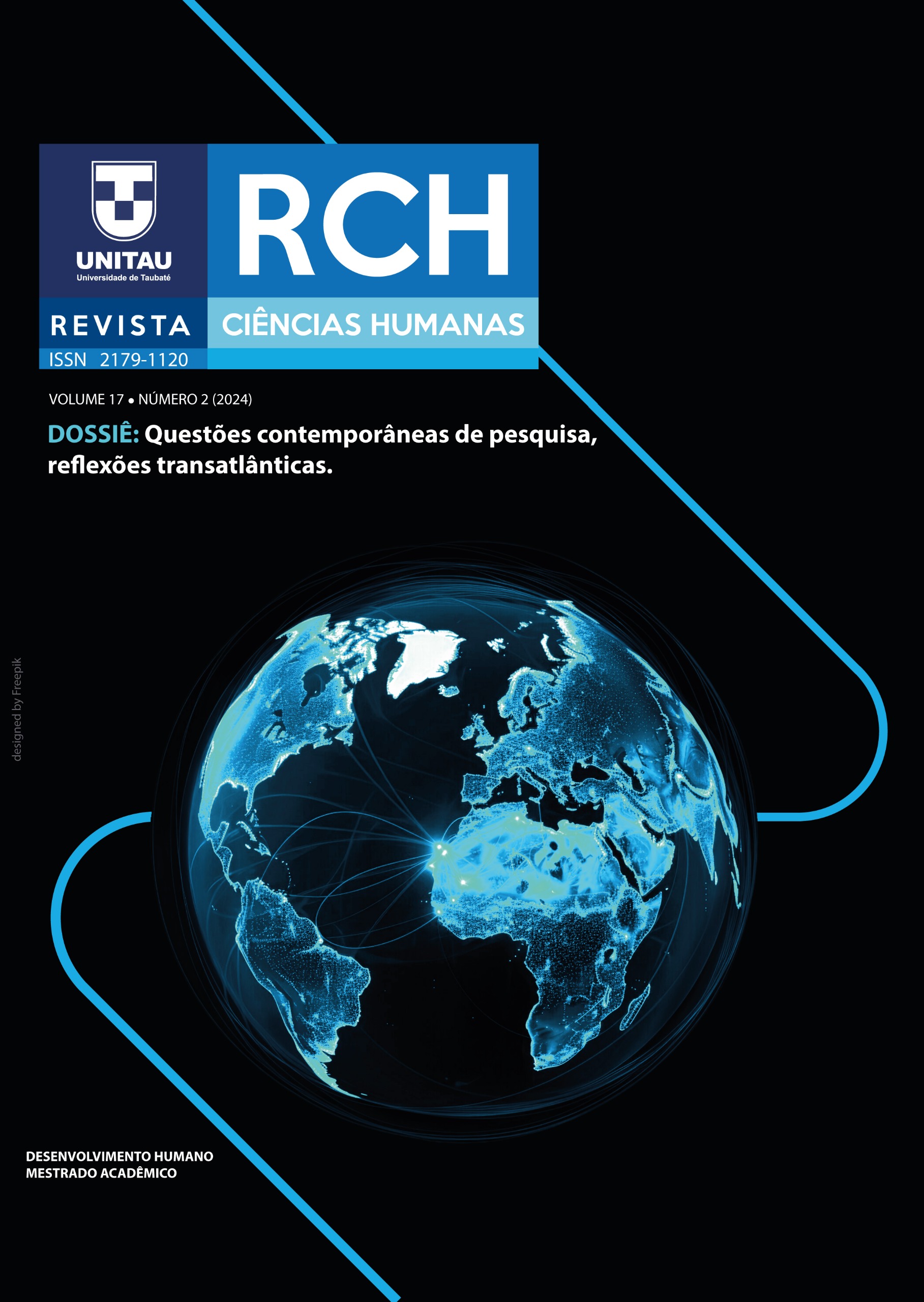Desvendando Estereótipos
Uma Breve Análise das Representações Raciais em Clean Pastures (1937)
DOI:
https://doi.org/10.32813/2179-1120.2024.v17.n2.a1055Keywords:
Desenhos Animados, Estereótipos Raciais, Warner Bros., Afro-Americanos, RacismoAbstract
This work aims to analyze the cartoon "Clean Pastures," produced by Warner Bros. in 1937, which is part of the "Eleven Censored" list due to the presence of racial stereotypes related to the African American population. The context in which it was produced is the "Golden Age" of American animation, and although it was censored, its analysis is important to understand how racism manifested in that society. Film analysis will be used to identify stereotypes of African Americans, such as those related to jazz, primitivism, and a penchant for gambling, which convey the idea of sinful behavior transforming the post-mortem paradise image of blacks into hell. The conclusion reveals the importance of debating and reflecting on cartoons to understand the nuances of racism in our own society and the possibilities of overcoming it. The value of cartoons as a source for historians to analyze possible ethnic representations is emphasized.
Metrics
References
BARRIER, Michael. Hollywood Cartoons: American Animation in Its Golden Age. New York: Oxford University Press, 1999.
CUNHA, Ronell. A representação do espaço urbano no cinema: Uma viagem dos primeiros cinemas ao princípio da modernidade cinematográfica. 2019. 333f. Dissertação (Mestrado) – Universidade Federal do Rio Grande do Sul, Porto Alegre, 2019.
FERRO, Marc. A Manipulação da História no Ensino e nos meios de Comunicação. São Paulo: IBRASA, 1983.
FRASER, Ben; LINDVALL, Terry. "Darker Shades of Animation": African-American Images in the Warner Bros. Cartoon. In: SANDLER, Kevin S. (ed.). Reading the Rabbit: Explorations in Warner Bros. Animation. 2. ed. Jackson: University Press of Mississippi, 1998.
GOLDMARK, Daniel. Tunes for 'Toons: Music and the Hollywood Cartoon. Berkeley: University of California Press, 2005.
LEHMAN, Christopher P. The Colored Cartoon: Black Presentation in American Animated Short Films, 1907-1954. Amherst: University of Massachusetts Press, 2007.
______________________. African American Representation through the Combination of Live Action and Animation. In: BECKMAN, Karen (org.). Animating Film Theory. Durhan and London: Duke University Press, 2014.
______________________. The Censored 11: “Clean Pastures” (1937). 2017. Disponível em: https://cartoonresearch.com/index.php/the-censored-11-clean-pastures-1937/. Acesso em: 11 dez. 2023.
MITCHELL, W.J.T. What Do Pictures Want? The Lives and Loves of Images. Chicago: University of Chicago Press, 2005.
MOREIRA, Adilson. Racismo Recreativo. São Paulo: Sueli Carneiro; Pólen, 2019.
MORETTIN, Eduardo. O cinema como fonte histórica na obra de Marc Ferro. In: XAVIER, Ismail (org.). História e Cinema: Dimensões Históricas do Audiovisual. 2. ed. Rio de Janeiro: Editora Paz e Terra, 2003.
SAMPSON, Henry T. That's Enough Folks: Black Images in Animated Cartoons, 1900-1960. Lanham: Scarecrow Press, 1998.
SANDLER, Kevin S. Reading the Rabbit: Explorations in Warner Bros. Animation. 2. ed. Jackson: University Press of Mississippi, 1998.
SILVA, Kalina V.; SILVA, Maciel H.. Dicionário de Conceitos Históricos. Rio de Janeiro: Ed. Globo, 2005.
WELLS, Paul. Understanding Animation. 2nd ed. London: Routledge, 1998.
Downloads
Published
How to Cite
Issue
Section
License
Copyright (c) 2024 Human Sciences Journal - RCH

This work is licensed under a Creative Commons Attribution 4.0 International License.
The publications of the Human Sciences Journal are registered under the Creative Commons Attribution CC-BY license.
1. The contents of the manuscripts are the exclusive responsibility of their author.
2. It is allowed the total or partial reproduction of manuscripts published in the journal, provided that the source is cited.
3. When submitting their manuscript to the Journal, the authors certify that they are of their own authorship and unpublished (not published in any digital or printed media).
4. The copyright of the articles published in the Journal are of the author, with first publication rights reserved for this journal.
5. For disclosure purposes, the Journal may replicate the works published in this journal in other media, such as social networks (Facebook, Academia.Edu, etc.).
6. The Journal is of public access, therefore, the authors who submit manuscripts agree that they are of free use.
7. In case of any illegality, fraud, or other attitude that puts in doubt the honesty of the publication, especially the practice of plagiarism, the manuscript will be automatically rejected.
8. If the manuscript has already been published, it will be immediately removed from the base of the Journal, its citation linked to the Journal will be prohibited and the cancellation of the referred publication shall be reported in the next issue of the one in which the article was published. In case of the procedure for the withdrawal of the paper the authors will be informed beforehand, being guaranteed the right to a broad defense.
9. The personal data provided by the authors will be used exclusively for the services provided by this publication and will not be made available for other purposes or to third parties.





